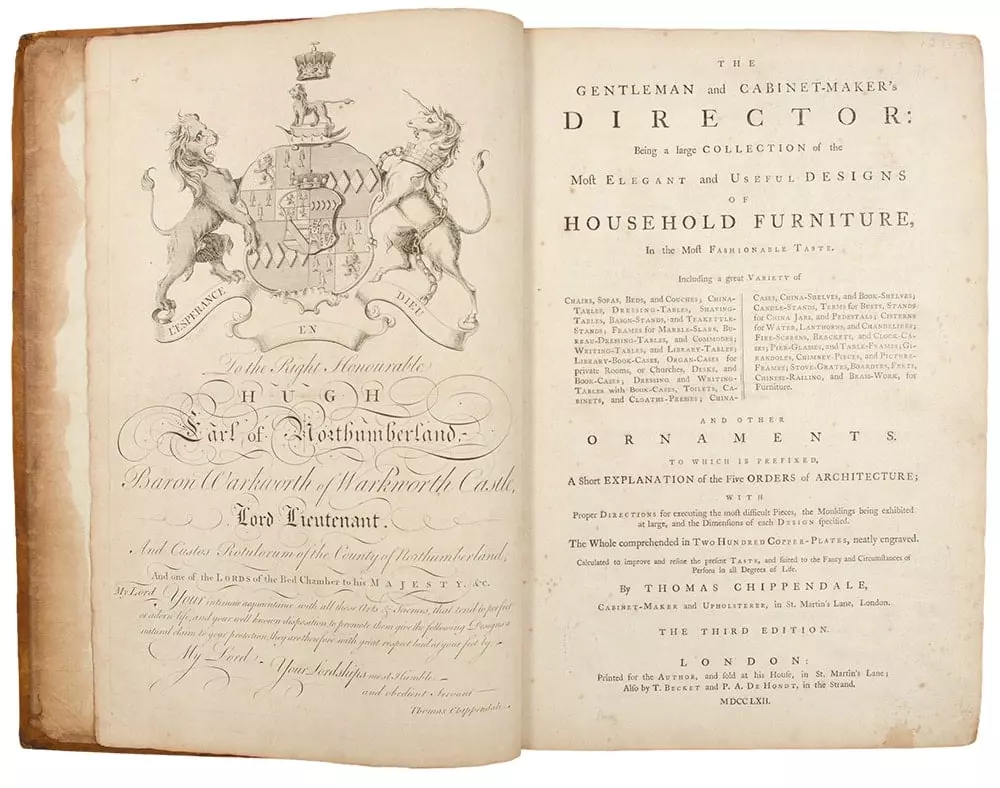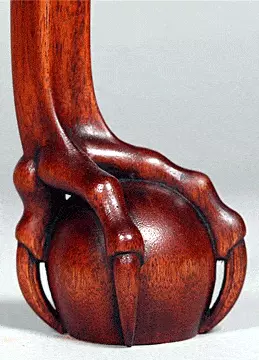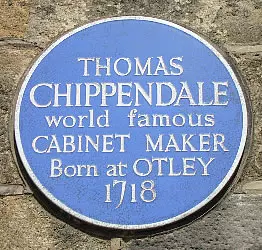When it comes to antique furniture, one name stands out above the rest: Chippendale. This famous style, dominant in America from 1750 to 1780, takes its name from Thomas Chippendale, an 18th-century cabinet maker who created reproductions of popular English designs with elements of English, Chinese, and Gothic decorative pieces.
The Legacy of Thomas Chippendale
Although details about Chippendale's early career remain unknown, we do know that he was born in 1718 in Otley, West Yorkshire, England. His family had a long history in the woodworking business, and Chippendale likely continued the family tradition after receiving training from his father, John Chippendale, a carpenter.
Chippendale's eye for business and his desire for status and self-promotion led him to publish the groundbreaking "Gentleman and Cabinet-Maker's Director" in 1754. This collection of English furnishing design templates became immensely popular, influencing furniture makers and sellers alike. The book showcased Chippendale's revised designs, which embraced the fashionable trends of the mid-18th century, including elements of Neoclassicism.
The Chippendale Style
Chippendale's designs extended beyond furniture to include wallpapers, carpets, fire grates, and decorative elements. He even created complete room layouts. His firm functioned as a modern interior design studio, collaborating with other professionals to fully decorate and furnish rooms or entire houses. Chippendale often undertook significant commissions from elite clients, and twenty-six of these commissions have been identified.
Identifying Chippendale Furniture
The most exquisite Chippendale style pieces were primarily made of mahogany, imported from the West Indies. Less valuable furniture might incorporate walnut, cherry, maple, or veneers, but solid wood and luxurious fabrics like brocades, velvets, and damasks were the norm for Chippendale's refined pieces.
When identifying Chippendale pieces, it is crucial to note their distinctive legs and feet. The six basic Chippendale leg styles include the lion's paw, the ball and claw, the late Chippendale, the Marlborough, the club, and the spade. These styles were influenced by the cabriole shape, a serpentine style with a characteristic foot, and Chippendale's Gothic and Chinese-inspired designs featured straight or tapering legs, tracery carving, and fret and lattice work.
Validating the authenticity of Chippendale furniture can be challenging since Chippendale never used a maker's mark. One way to verify its origin is by finding original bills hidden among estate papers or similar documents. However, it's important to note that as Chippendale's business grew, much of the work was executed by his craftsmen rather than Chippendale himself.
The Legacy of Chippendale
The impact of the Chippendale style can still be seen in formal furniture construction and manufacturing today, with the use of cabriole legs and ball-and-claw feet. Despite occasional struggles to secure payment for his commissions, Chippendale's designs now command exorbitant prices.
In 1963, the Chippendale Society was founded in England, and it now possesses a significant collection of furniture and documents, often on display at Temple Newsam House in Leeds, England.
Chippendale's enduring legacy in the world of furniture design is a testament to his genius and the timeless appeal of his creations.
 Chippendale Style Chair with Yoke Back, Pierced Splat, Cabriole Legs, and Ball and Claw Feet, c. 1765-1775. - Image via. Prices4Antiques.com
Chippendale Style Chair with Yoke Back, Pierced Splat, Cabriole Legs, and Ball and Claw Feet, c. 1765-1775. - Image via. Prices4Antiques.com
 The Gentleman and Cabinet-Maker’s Director - Image via donaldheald.com
The Gentleman and Cabinet-Maker’s Director - Image via donaldheald.com
 The Gentleman and Cabinet-Maker’s Director - Image via donaldheald.com
The Gentleman and Cabinet-Maker’s Director - Image via donaldheald.com
 Ball claw foot - Image via Theantiquesalmanac.com
Ball claw foot - Image via Theantiquesalmanac.com
 Chippendale dropleaf table - Image via Theantiquesalmanac.com
Chippendale dropleaf table - Image via Theantiquesalmanac.com
 Plaque to Chippendale’s memory in the place of his birth - Image via Wikipedia.com
Plaque to Chippendale’s memory in the place of his birth - Image via Wikipedia.com









